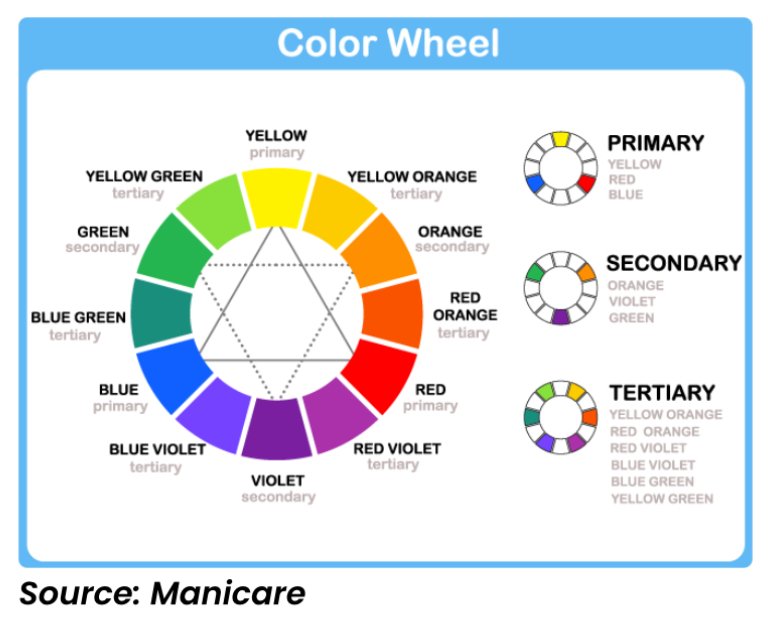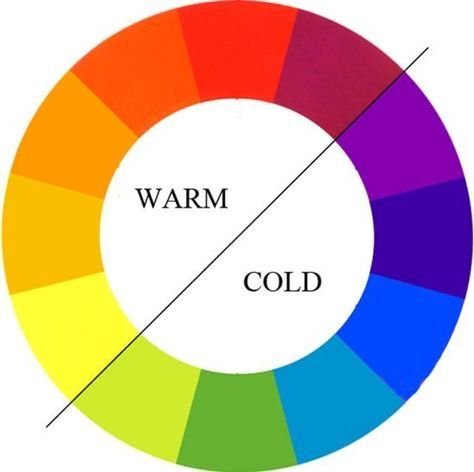
| The Foundation: Color Theory |
Understanding color theory is crucial for any oil painter. It provides a framework for creating visually appealing and harmonious color palettes. Let’s explore the fundamentals:
- Primary Colors: Red, yellow, and blue are the primary colors. They cannot be created by mixing other colors and form the basis for all other colors.
- Secondary Colors: Mixing two primary colors creates secondary colors:
- Red + Yellow = Orange
- Yellow + Blue = Green
- Blue + Red = Violet
- Tertiary Colors: Mixing a primary color with a neighboring secondary color creates tertiary colors:
- Red + Orange = Red-Orange
- Yellow + Orange = Yellow-Orange
- Yellow + Green = Yellow-Green
- Blue + Green = Blue-Green
- Blue + Violet = Blue-Violet
- Red + Violet = Red-Violet
Visualising this information is easier with a colour wheel.
| Navigating the Color Wheel |

The color wheel is a visual representation of colors arranged according to their chromatic relationship. It’s an invaluable tool for understanding color harmonies. Key concepts include:
- Complementary Colors: Colors opposite each other on the wheel (e.g., red and green, blue and orange, yellow and violet). When placed next to each other, they create high contrast and vibrancy. When mixed, they neutralize each other, creating browns and grays.
- Analogous Colors: Colors that are next to each other on the wheel (e.g., blue, blue-green, and green). They create harmonious and serene color schemes.
- Triadic Colors: Three colors equally spaced on the wheel (e.g., red, yellow, and blue). They offer a balanced and vibrant palette.
| Warm vs. Cool Colors |

Colors can be broadly categorized as warm or cool:
- Warm Colors: Reds, oranges, and yellows evoke feelings of warmth, energy, and excitement. They tend to advance in a painting.
- Cool Colors: Blues, greens, and violets evoke feelings of calmness, peace, and serenity. They tend to recede in a painting.
Understanding the temperature of a color is vital for creating depth, atmosphere, and mood in your paintings.
| Practical Tips for Mixing Oil Paints |
Achieving vibrant and harmonious colors requires practice and attention to detail. Here are some practical tips for mixing oil paints:
- Start Small: Begin with small amounts of paint. It’s easier to add more color than to remove it.
- Mix Thoroughly: Ensure the colors are fully integrated to avoid streaks or unevenness.
- Use a Palette Knife: A palette knife is ideal for mixing paints without contaminating your brushes.
- Clean Your Palette: Regularly clean your palette to prevent unwanted color mixing.
- Consider the Undertone: Be aware of the undertones of your paints (e.g., a warm red vs. a cool red). This will affect the final color mixture.
- Glazing: Use glazing techniques to build up layers of color and create luminous effects. Apply thin, transparent layers of paint over dried underlayers.
- Scumbling: Scumbling involves applying a thin, broken layer of paint over another color. This creates texture and visual interest.
- Keep a Color Journal: Document your color mixtures, noting the proportions of each paint. This will help you replicate colors in the future.
| Blending Techniques |
Blending is essential for creating smooth transitions and soft edges in your oil paintings. Here are some common techniques:
- Dry Brushing: Use a dry brush to gently blend the edges of colors. This creates a soft, hazy effect.
- Feathering: Use light, feathery strokes to blend colors together. This technique is ideal for creating subtle transitions.
- Softening Edges: Use a clean, soft brush to gently soften the edges of shapes. This creates a more natural and organic look.
- Layering: Apply thin layers of paint on top of each other to create depth and richness. This technique is particularly effective for creating realistic skin tones and landscapes.
| Summary |
Mastering color mixing in oil painting is a journey that requires patience, practice, and a solid understanding of color theory. You can unlock a world of vibrant and harmonious colors in your art by understanding primary, secondary, and tertiary colors, the color wheel, warm vs. cool colors, and employing effective mixing and blending techniques. Experiment, explore, and embrace the beauty of color!
